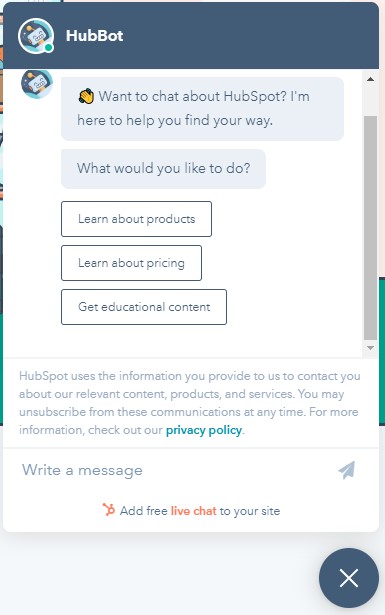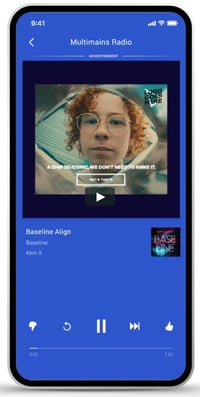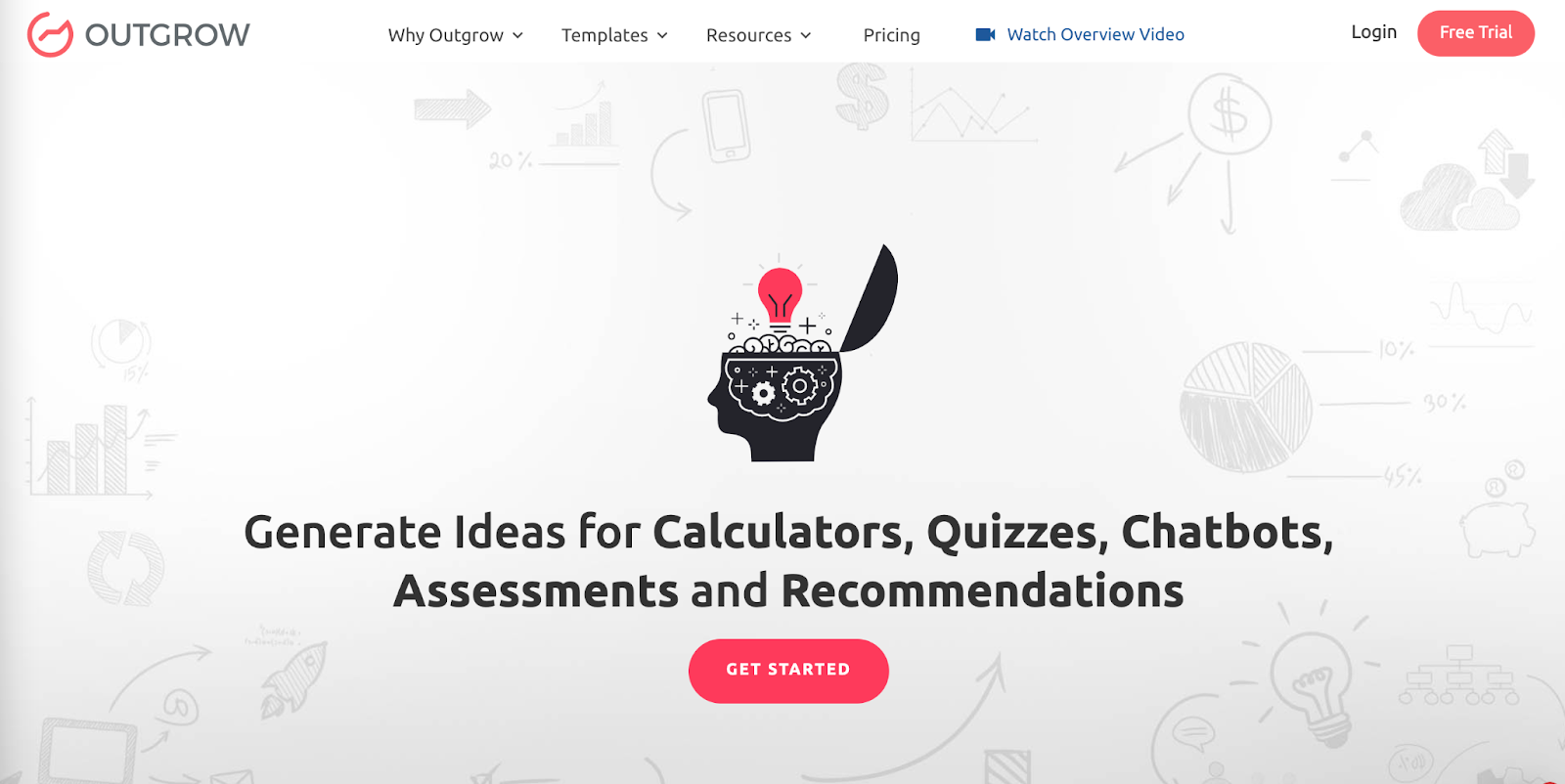Interactive marketing is a two-way approach to marketing focused on interaction and collaboration as per the reaction and inclination of the customers. It is also known as event-driven, trigger-based, or one-to-one marketing. Interactive marketing relies on customer feedback as a valuable resource to adapt and improve strategies, consequently optimizing marketing costs.
Hence interactive marketing campaigns are directly proportional to the results of consumers’ actions, expectations, behaviors, preferences, or even demands. It is known as trigger-based marketing simply because it uses triggers to communicate with users for example polls, contests, quizzes, etc. As a result, interactive marketing is highly reliant on data gathered while interacting and engaging with prospects.
Table of Contents
What is Interactive Marketing?
Interactive marketing is a type of marketing campaign that interacts with existing and potential customers as per their actions, reactions, and inclinations. Interactive marketing strategies are triggered by the behavioral preferences of the prospects.
The advancement in technology, internet penetration, and the popularity of social networking platforms has bought an enormous shift of focus for interactive marketing. This marketing technique was applied in digital marketing for years but, now the focus is shifted to personalization.
Unfocused marketing campaigns are almost an ancient phenomenon. Consumers now expect highly personalized marketing efforts targeting their interests. Interactive marketing is a form of direct marketing that is highly customer-centric in its approach.
Common Types of Interactive Marketing Strategies
There are various approaches to interactive marketing. However, the goal is always the same. Get people to respond to your content. Here are ways you can make this happen:
1. Interactive Storytelling Via Content
This form of marketing allows marketers to seize various opportunities to be as creative with their content as possible.
Creating ads that depict a story or adding animations or infographics to a blog post, the range is enough to scratch the creative itch of marketers. The discovery of information through innovative channels creates more interaction.
2. Layering Information
Companies now strive to share and disseminate as much information as they can to their customers. Creating information-heavy content can become too dull for many. As a result, interactive marketing acts as a marvelous approach to layering information for consumers.
. A way to do so is to break detailed information into smaller pieces of creative content. An easy-to-read infographic would appeal to larger audiences than an all-informative blog.
3. Personalized Content
Personalized content can only be created if the company has an insight into consumer behavior, preferences, demands, or expectations. This means that the company needs a lot of data about the consumer to guess their likes and dislikes.
Most companies maintain a database with essential information about their customers. This includes their demographic, psychographic data, their contact information, email ids, etc. The more you know about your consumer, the better your ad can target the customer.
This helps in creating a more meaningful marketing experience which leads to higher conversions. The relatability and relevancy of content matter a lot.
4. Two-way Interaction
The content you share in a public space should have the ability to start a conversation of some sort. That is what makes interactive marketing a successful endeavor. Active participation on the part of the consumer is the goal of these campaigns.
To make your content interactive, a marketer needs to keep communication open for the customer. There are various types of interactive tools a marketer can incorporate into their content. A few of the tools mentioned above include:
4.1. Contests
Companies have been hosting contests for ages now. It is one of the oldest tricks in the book of interactive marketing. Contests have evolved, but they succeed at catching the audience’s attention. Raffles, giveaways, or social media contests are proven ways to capture the audience’s attention.
Now contests are not approached as a standalone strategy. Contests are a single aspect of the complete and holistic marketing strategy. They are a fun way to approach all your clients or focus on a specific group of clients based on the prize that may interest only that group.
4.2. Quizzes
In 2015, 90% of the most shared Facebook posts were quizzes. That data may not be so outdated yet. You may have hated quizzes back in high school, but companies have found ways to make quizzes fun. The best thing about a quiz is that it is an inherently shareable piece of content.
If one customer takes the quiz and likes it, that quiz will likely be shared with friends and family of that customer. Nowadays, companies first encourage customers to take a quiz before showing them a catalog of their products. Based on how the customer fares in the quiz, products that will suit them are suggested.
4.3. Polls
Polls are usually quicker to complete as opposed to a quiz or a contest. An incentive to finish a poll is that people want to know how similar or different their views are from others.
This encourages them to at least finish the poll and be rewarded with immediate results. Polls are a great tool to enhance user engagement but are not great at lead generation.
4.4. Videos
Interactive videos can be of many types but, these include a different call to action. As a result, it is easier to capture and retain the audience’s attention as they are constantly re-engaging with the content.
Interactive videos have become so popular that now they have entered the film industry in the form of interactive movies. An interactive video is also a great way to layer information for the consumer.
4.5. Emails
Email marketing is a prevalent practice followed by most companies if they have access to your email address.
However, with the increase in spam and junk emails, it isn’t easy to ensure that your email marketing efforts are fruitful in being interactive.
Steps to Implement an Interactive Marketing Plan
1. Find out the Triggers: The first step in implementing an interactive marketing plan is to identify the triggers – the behaviors or actions of your customers that will initiate a response from your system. Triggers could range from viewing a particular product on your website to making a certain purchase amount. Utilizing advanced technology is crucial in tracking and identifying these triggers.
2. Gauge the Response: Once triggers have been identified, the next step is determining the appropriate response. This response should aim to enhance customer satisfaction and attract customers, and could be anything from a personalized product recommendation to a targeted email campaign.
3. Establish Your System: After determining your responses, the next step is to establish your system. This involves setting up the advanced technology required to monitor customer behavior, detect triggers, and execute the appropriate response. Ensuring your system works smoothly is essential to the success of your interactive marketing plan.
4. Evaluate Your Success: It’s important to regularly evaluate the success of your marketing initiatives. This could involve tracking click-through rates, sales conversions, customer engagement levels, or other key performance indicators. This data can provide valuable insights into what’s working and where improvements can be made.
5. Optimize Your Strategy: Based on your evaluation, you should adjust and optimize your strategy as needed. This could involve changing your triggers or responses, tweaking your system for better performance, or overhauling your strategy entirely. The end goal is to create an interactive future where every customer interaction is personalized and effective.
Benefits of Interactive Marketing
Some of the benefits of an effective interactive marketing strategy are –
1) Increase in Conversion Rates
Interactive content helps companies to increase their conversion rates as customers actively engage with the company in one way or another. This active engagement leads to an increased chance of converting a customer into something more beneficial for the company.
2) Better Understanding Of Your Audience
The interactive approach enables you to understand your audience better and what they think about particular products or services. This helps businesses to tailor their campaigns and by using interactive content, they can create more personalized experiences for the customers.
3) More Engagement With Your Brand
As customers engage with your brand through various interactive content such as polls, quizzes, videos, etc., this leads to an increased engagement with your brand. This improved engagement leads to better customer retention and loyalty.
4) Creative Content Possibilities
Interactive content can be creative, entertaining, and educational at the same time. This helps businesses to engage with their customers in a fun and interesting way. It also helps to give your brand a unique voice as it allows you to incorporate interactive marketing into traditional marketing strategies.
5) Personalization
Interactive content allows businesses to personalize their messages and content depending on how the customer interacts with it. This helps in creating unique experiences for each customer by allowing them to interact with your brand through various mediums.
Challenges of Interactive Marketing
Despite being quite effective in offering favorable and conversion-driven results, interactive marketing also faces a lot of impediments while diving deep into the world of prospects and interacting as per their inclinations.
The biggest challenge that businesses face during interactive campaigns is the unavailability of all the customer data, as personalized data is the backbone of successful interactive marketing or advertising campaign. Hence, personalized customer intelligence which is inevitable for having a comprehensive view of prospects is one of the biggest challenges of interactive marketing campaigns.
Managing the excessive amount of data associated with data in warehouses, contact center applications, CRM systems, data lakes, and online and social activities is also one of the challenges of interactive campaigns. Some of the other notable challenges are-
- Pulling the audience’s attention
- Optimizing conversions of viewers to leads
- Ensuring marketing efforts are more customer-centric
- Widening the reach of the content
- Accomplishing marketing automation
Best Interactive Marketing Practices
1. Identify your target market and segment your customers
The very first step for any company is to have a clear image of its fictional ideal consumer. Once a company knows who its product will be most relevant to, it is easy to segment its current customers into different groups. Not all interactive marketing schemes will click with every audience.
By creating detailed personas for your buyers, it is easier to create a marketing campaign tailor-made for them. Creating engaging content has as much to do with the content you create objectively and its ability to be relevant to its target audience subjectively.
2. Figure out which triggers work the best
A trigger campaign includes sending a message once a specific event has occurred. Trigger messages are a great way to keep interacting with the user more naturally. Examples include a welcome message once you visit the website or install an app. Other triggers could be sent after some time has elapsed to encourage users to re-engage with the brands.
A company needs to define the channel through which the trigger is being sent. Some triggers should be omnichannel as they are urgent, like a security breach. However, if less relevant and not-so-urgent triggers are shared across various channels, your brand risks annoying customers.
3. PERSONALIZE your content
It is by far the most important tip yet the most obvious one of all. If you want to create a unique experience for the user, you must focus on a personalized approach in your interactive marketing efforts.
It could be as simple as using customers’ names while greeting them in emails or messages. A personalized happy birthday wish along with some contest or offer is another great way of making the most out of the data you have gathered about your customers. Personalization of content is a data-driven process, so you need to ensure your database is as up-to-date as possible.
4. Create incentives for your customers
Why will a user spend time interacting with the content you share? There are various possible answers to this question. But most answers are meaningless if there is no incentive attached to the content you share.
What is the use of a contest or a giveaway with no prize? The prize you offer in return for your customer’s time and attention must be worth their time and efforts. Otherwise, organizing and hosting such contests are meaningless. Also, it too can provide great insight into customer behavior. Which prize interests which customer? The answer to this question reveals a lot about a person’s tastes and preferences.
5. Make the most out of modern technology
Modern technology has enabled marketers to gather so much data on their customers in the first place. Acquiring data on consumers is no small feat.
Technology has enabled interactive marketing to be personalized while adding a sense of interaction to mass marketing as well. Leveraging technology to scale your approach of personalization can be done by utilizing various tools like:
- Data Visualization Tools – Infographics have become exceedingly popular and easy to create with such tools.
- Chatbots – Chatbots are a great conversation tool to interact with customers and answer common questions that save time repeating the same information.
- Virtual Reality- Augmented reality creates an interactive environment that is great for demonstrating products and services in a virtual domain.
- Interactive Videos – Interactive videos, as mentioned previously, keep the audience captivated while allowing them to follow instructions at their own pace. It is a marvelous and ingenious marketing tool that is extremely user-friendly.
Interactive Marketing Examples
1. Conversational Marketing of HubSpot
HubSpot utilizes messaging apps for interacting with its audiences. It helps HubSpot in reducing the friction in the buying journey of its audiences and optimizes lead generation and conversions.
2. New Zealand tourism industry Quiz
In the quiz above from the New Zealand tourism industry, it is clear that it will preferably convert those prospects who are interested in camping responsibly in the Holiday Parks of New Zealand.
3. MotorOil Polls
The MotorOil Polls example above shows how crucial marketing decisions like changing your brand logo can be made by interacting with the brand audiences and engaging them with visuals or videos within your content.
4) Interactive Voice Ad on Pandora | Doritos
Doritos has cleverly engaged the audience by transforming them from passive to active listeners, tantalizing their taste buds with the sound of crunching chips. The advertisement presents questions to the viewers and utilizes AI to personalize their experience according to their responses.
5) Interactive Idea Generation | Outgrow
The idea generator enables marketers to enter their industry and business website to receive automated suggestions for various interactive content. On the results page, personalized content and tools are provided based on specific industries, target audiences, and conversion funnel stages.
Conclusion!
Interactive marketing campaigns are effective in running marketing campaigns by letting audiences interact with your marketing content.
It helps brands in finding key insights and inclinations details of the target audiences that ultimately assist in making more personalized campaigns to convert those target audiences who interacted with the brand’s content.
How effective do you find interactive marketing campaigns in generating more leads and sales?
Liked this post? Check out the complete series on Marketing


